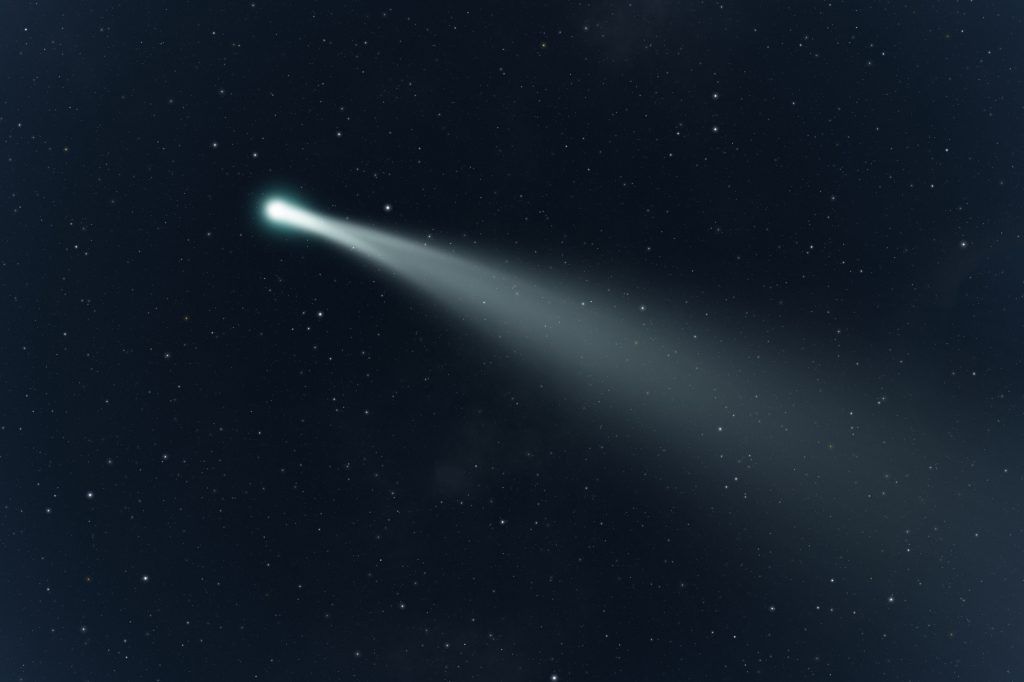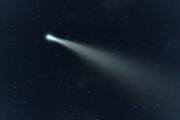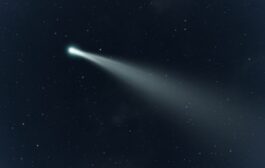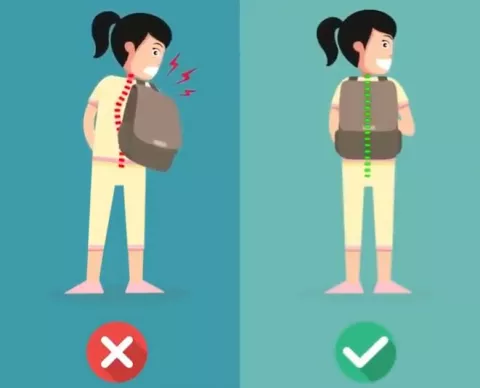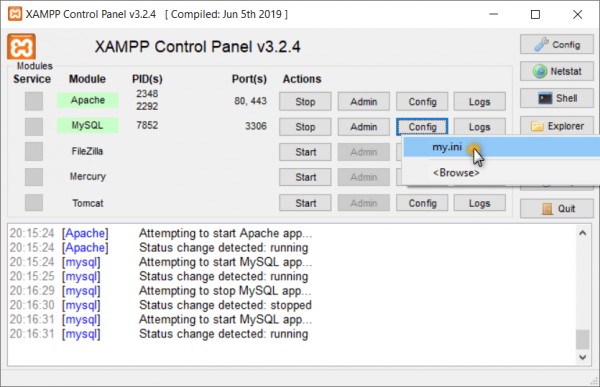Hideo Nishimura of Kakegawa, Japan, was photographing the night sky on August 11 and 12, 2023, when he captured a new comet that is now named after him. Comet C/2023 P1 Nishimura is currently orbiting low in the dawn sky, in front of the constellation of Gemini. The comet was hidden in the glare of the Sun before Nishimura picked it up in his images. And, by next month, it may be bright enough to be seen with the unaided eye!
Some estimates are already calling the comet’s magnitude 10.4, which means people using binoculars six inches or larger should be able to see it in a dark sky. Other observations suggest that the comet’s tail is eight arc minutes long. As the comet approaches the Sun, its brightness will increase and its tail will continue to grow. The comet will be at its brightest in mid-September when it is closest to the Sun and Earth.
Comet P1 Nishimura is racing toward the sun
By August 15–16, 2023, the comet was already passing Earth’s orbit as it approached the Sun. Comet Nishimura is traveling so fast that it will reach the orbit of Venus in a few days by August 27, 2023.
Sky lovers can view the comet with a small telescope through the remainder of August (see chart below). It is best to try to see it now, as it may not survive the close pass of the Sun. The reason for this is that it passes very close to our star. Comet Nishimura will pass closer to the Sun than the orbit of Mercury. If it survives August, Comet Nishimura should become a binocular object during the early morning hours of September. Then, observers with an unobstructed view of the east-northeast horizon can get good binocular views of Comet C/2023 P1 (Nishimura) around September 10, about 45 minutes before sunrise.
Path of comet p1
Comet Nishimura is traveling through the zodiac constellations. It will move from Gemini to Cancer in late August and early September. It will pass through Leo in mid-September and then enter Virgo in the second half of September.
How bright will the comet be?
Estimating the brightness of comets is always challenging because they are so unpredictable. While Comet Nishimura may be bright enough to be seen with the unaided eye, it may also dissipate as it approaches the Sun. But here’s an estimate of how bright the comet will be on certain dates and where to find it.
Starhawk estimates that on September 11 the comet will have a magnitude of 4.9 – well within the range of the unaided eye. On the morning of Sept. 11, you can look for the comet before dawn. The first object you’ll see in the eastern sky is a crescent moon, followed by bright Venus nearby. The comet will be close to the pair and close to the star Apheera (Zeta Leonis) in Leo’s sickle (the trailing question mark).
The comet’s closest approach to Earth occurs on 13 September, when it is 0.85 AU away. Around this time, the comet transitions from a morning object to an evening object. On September 15, the comet will pass just 10 arcminutes from Denebola, the second-brightest star in Leo. But the pair will be only 12 degrees from the Sun, making them difficult to catch before they set after sunset.
Starhawk estimates the comet will have a magnitude of 3.2 during perihelion on September 18 – when the comet is closest to the Sun. Of course, when the comet is bright and close to the Sun, it will be difficult to see because it will be closest to the Sun. There is also a sun on the dome of our sky, which means that sunlight will wash out nearby objects. Observers in the Northern Hemisphere have the best shot of seeing the comet after sunset in Virgo on September 18.
Maps for new comet C/2023 P1
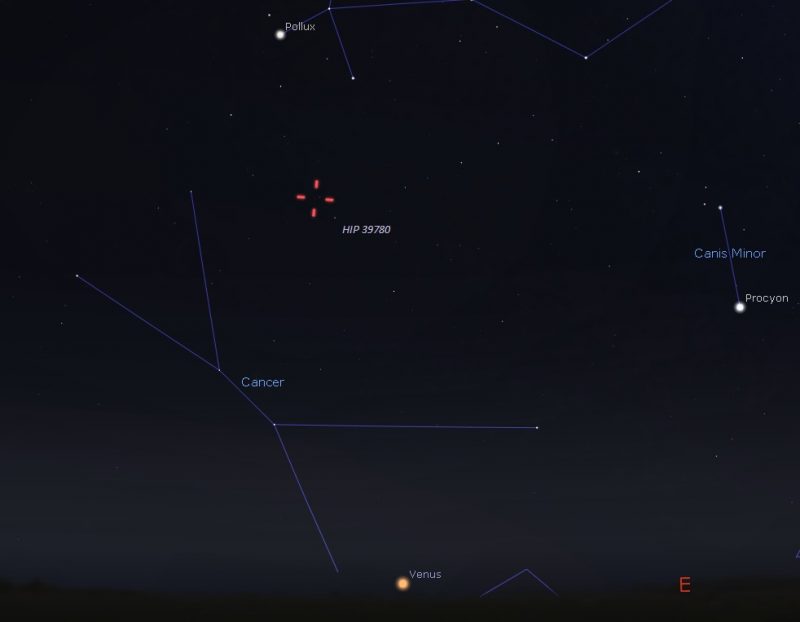
Location of Comet C/2023 P1 (Nishimura) on August 27, 2023, some 45 minutes before sunrise. Illustration by Eddie Irizarry using Stellarium.
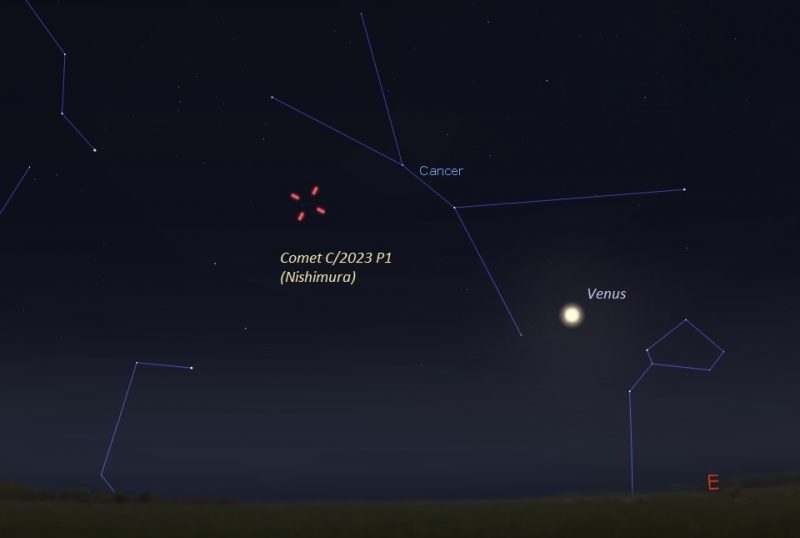
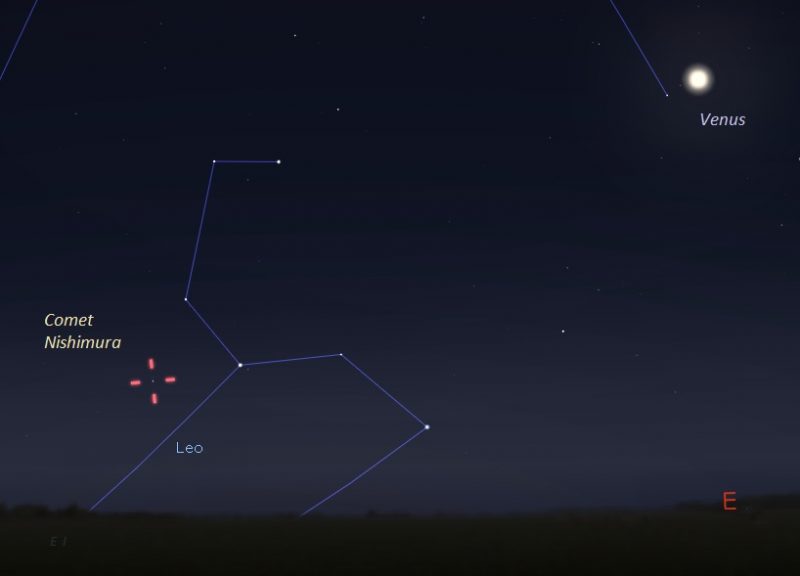
Source : https://earthsky.org/tonight/new-comet-c-2023-p1-nishimura-bright-august-september-october-2023/

